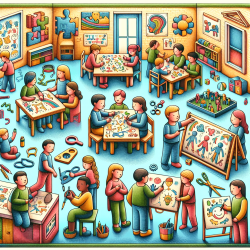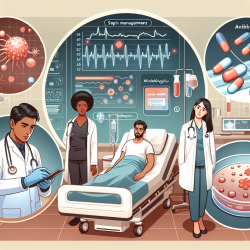Introduction
In the ever-evolving field of healthcare, the integration of Health Technology Assessment (HTA) has become pivotal for making informed decisions. A recent study titled "A SWOT analysis of the development of health technology assessment in Iran" offers a comprehensive overview of the strengths, weaknesses, opportunities, and threats in developing HTA in Iran. This analysis provides valuable insights for practitioners, especially those involved in online therapy services like TinyEYE, to enhance their skills and decision-making processes.
Understanding the SWOT Analysis
The study conducted in Iran identified several key strengths, weaknesses, opportunities, and threats in the development of HTA:
- Strengths: The establishment of an administrative unit for HTA within the Ministry of Health and Medical Education (MOHME) and the integration of HTA in university-level courses.
- Weaknesses: A lack of awareness among managers and decision-makers about HTA's advantages and a shortage of HTA-trained staff.
- Opportunities: Political support for reducing national health expenditures and improved communication among stakeholders.
- Threats: Economic sanctions, high inflation, and a lack of support from insurance companies.
Implications for Practitioners
For practitioners in the field of online therapy, the insights from this SWOT analysis can be instrumental in improving service delivery. Here are some actionable steps:
- Leverage Strengths: Utilize the structured approach of HTA to systematically evaluate and implement new technologies in therapy sessions, ensuring evidence-based practices.
- Address Weaknesses: Invest in training programs to enhance awareness and skills related to HTA among staff and decision-makers.
- Capitalize on Opportunities: Engage with political and healthcare stakeholders to advocate for policies that support the integration of HTA in online therapy services.
- Mitigate Threats: Develop strategies to navigate economic challenges and seek alternative funding sources to support HTA initiatives.
Encouraging Further Research
While the study provides a robust framework for understanding HTA's role in Iran, there is a need for further research to explore its application in other contexts, such as online therapy. Practitioners are encouraged to delve deeper into the nuances of HTA and its potential to revolutionize therapy services.
Conclusion
Health Technology Assessment is a powerful tool that can drive data-driven decisions and improve outcomes in healthcare. By understanding the strengths, weaknesses, opportunities, and threats identified in Iran's HTA development, practitioners can enhance their skills and contribute to better healthcare delivery. To read the original research paper, please follow this link: A SWOT analysis of the development of health technology assessment in Iran.










